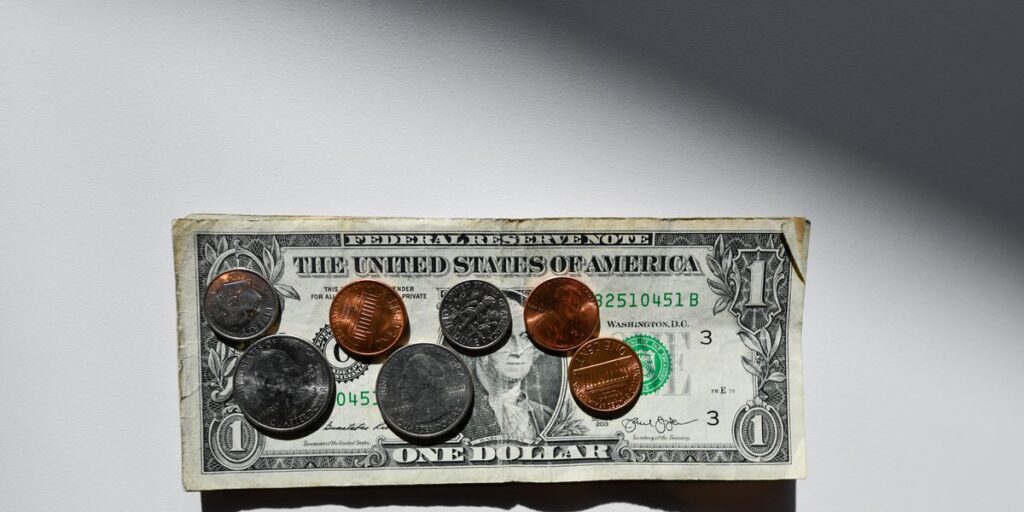What Is a Car Lease Disposition Fee?

Once your lease ends, you might have the option of buying the car outright or returning it. This will depend on the agreement you made with the dealership. If you choose to return the leased vehicle, you might find a surprise waiting for you. Although you might think your days of paying for the car are over, your dealership might tack on an additional charge called a lease disposition fee.
If you encounter a disposition fee, never fear, you might be able to avoid paying it. At Car and Driver, we’re here to help you learn what these fees are, how much they cost, and how you can avoid them. We’ll also offer tips for getting the best lease possible and tell you how you can dodge extra fees when signing a contract.
What Is a Car Lease Disposition Fee?
A lease disposition fee is a charge many dealerships impose when a leased vehicle is returned. Some companies also call it a “turn-in fee.” By the time you turn in your lease, you’ve probably spent months or years in the vehicle. No matter how careful you are, you’re likely to inflict some wear and tear on the car that can affect the dealer’s ability to put it back on the lot.
Explore The Car Loan That Is Right For You Right Here:
The purpose of the disposition fee is to compensate the dealership for the costs associated with reconditioning and cleaning the car. While this fee is included in the original lease contract, many customers don’t notice it because they’re more focused on things like monthly payments and down payments. Because of this, it’s important to scrutinize every part of a lease before you sign.
Many dealers require lessors to put down a security deposit after signing the lease. This money can cover extensive damage to the car and other events that cost the dealership money. In many cases, the disposition fee will be taken out of this deposit once you return the leased car. You’ll then receive the remainder of the sum, as long as the vehicle is in good condition.
How Much Is a Lease Disposition Fee?
According to Edmunds, the average lease disposition fee is between $300 and $400. This amount can vary based on your location and the make and model of the car. Fees might also increase due to current economic conditions or because of extensive wear and tear. Before you sign a lease, ask your representative about the disposition fees the dealership charges.
Can You Avoid A Lease Disposition Fee?
The disposition fee will be included in the contract you sign with your dealership. This means once you’ve signed, you’ve legally pledged to pay the amount required. Unfortunately, this doesn’t leave much room for you to simply avoid the fee. However, you can take several alternative routes if you want to avoid these charges, including:
Buy the Car
We know this is a big step, but in some cases, buying a car at the end of a lease is a good way to avoid additional fees. It will save the dealership the trouble of cleaning and reconditioning the vehicle for resale, and it will save you the associated fee. You will likely have to continue making payments on the vehicle, which might be worth it if you like the car and want to continue driving it.
You must make this arrangement during the lease negotiation process. In most cases, the dealer won’t simply allow you to buy the car if it wasn’t already agreed upon. If you plan to take this route, ask your representative if they offer lease-to-buy arrangements, as not all dealerships do.
Negotiate the Fee Beforehand
The best way to avoid unexpected charges is to go over every part of the lease before you sign. While monthly payments are important, it’s vital to look for additional fees hidden in your lease agreement. Review all your paperwork in detail, looking for charges that kick in at the end of the lease.
If you’ve gone over the lease agreement and haven’t found any mention of a disposition fee, you’re probably good to go. However, it’s a good idea to take one final precaution and ask your representative. They can tell you if you missed any fees while reviewing the lease.
Renew the Lease
In some cases, it might be possible to renew your lease for another couple of months. This can help you avoid your disposition fee, although it will appear again once the second lease agreement expires. While this can save you a few hundred dollars, you’ll have to continue making payments on the vehicle, and the extended lease might get in the way of your other auto plans. In the best-case scenario, the dealership might waive the fee as part of a loyalty program.
Lease a New Vehicle
Your final option is to lease a new vehicle at the same dealership. If you’re tired of driving the previous vehicle, this might be a better option than renewing the old lease. If you decide to take this route, scrutinize the lease for disposition fees. If possible, try to have these waived by the dealership. As mentioned, a dealer might be willing to do this if you’re a loyal customer who’s going to keep patronizing their business.
If you’re looking to get out of the leasing game and have a car of your own, consider buying a new vehicle. Dealers might apply the same loyalty benefits because an outright purchase is a much bigger benefit for them than collecting a small fee. At the very least, you’ll be able to stop leasing and avoid these charges in the future.
Other Fees to Look Out for at the End of Your Lease
Lease disposition fees might not be the only surprise charges you encounter when you turn in your car. Here are other fees to look out for when signing a lease contract:
Early Termination Fees
If unexpected circumstances arise, you might have to end your lease before the scheduled expiration. Many dealerships will charge you an additional fee if this happens. Check for this charge on your lease contract paperwork, and try to avoid breaching your lease if possible.
Purchase Option Fee
Most dealerships will give you the option to purchase your car once the lease ends. In most cases, you’ll have to pay a small, several-hundred-dollar fee if you want to pursue this option. Check for this charge, and ask about rolling it into your loan when the time comes to make the purchase.
Excessive Mileage Fee
If you look closely at your lease contract, you’ll most likely see it limits the total number of miles you’re allowed to drive in the car. This is because dealers want to resell the car once you’re finished with it, and it’s important for it to have relatively low mileage. If you go over the mileage limit, you’ll likely have to pay a fee to compensate the dealer for the loss of value.
Damage/Wear and Tear Fees
While the disposition fee covers reconditioning for routine wear and tear, some drivers will cause excessive damage to their leased vehicles. When this happens, dealers usually charge an extra fee to cover the additional expense of restoring the car. To avoid this, take good care of your leased vehicle, and remember it’s not really yours.
Tips for Avoiding Expensive Lease Fees
These are a few tips to help you choose a great lease that won’t saddle you with additional fees:
Think About Your Routine
As mentioned, you’ll have a mileage limit on your vehicle when you sign your lease agreement. It’s important to stay at or below this limit to avoid additional fees. When you’re going over your lease agreement, confirm your mileage limit, and then do some math.
Try to determine how many miles you drive on a weekly and monthly basis. Include your daily commute, weekly errands, and extra to account for unexpected trips. Once you have this number, try to extrapolate it out to the full length of the lease and see if you have enough mileage to maintain your normal schedule.
It might be challenging to do this math at a dealership under the watchful eye of a sales representative, so make your calculations before you arrive. If you find your mileage limit isn’t sufficient, try to negotiate it with your dealership. If that doesn’t work, you might want to do business with a different dealership. Spending a little time looking for a good deal is much better than not being able to drive your car in the way you need.
Review Every Part of Your Lease
Before you went to the dealership, you probably made a budget to determine how much you can spend monthly. Once you have the lease agreement in your hands, review your interest rate (money factor), and make sure your payments will fit within your budget with interest added.
Next, look over the lease to find hidden fees. These could include a disposition fee, an excess mileage fee, wear-and-tear fees, or an early termination fee. Make sure these fees are acceptable, and gauge the likelihood you’ll have to pay them. Do some research before you go to the showroom, and ask your representative to explain anything that isn’t clear. Remember, you can always turn down an offer and look for something else. Don’t succumb to pressure tactics or rush through the process.
Negotiate
When you’re shopping around for a lease, remember that none of the prices are final until you sign the lease agreement. Negotiation is a normal part of the process, and dealers often give slightly elevated quotes so they have some room for haggling.
For many people, this process can seem confrontational and difficult. It’s important to remember this is part of the sale representative’s daily routine. Remain courteous, and try to push your rates down a bit, but don’t expect a massive reduction in the overall price.
Take Care of Your Car
Taking care of your lease is one of the best and simplest ways to avoid paying hefty fees at the end of your contract. Don’t smoke, avoid eating in the car, park in safe areas, and avoid going off-road. It’s also vital to use the right fuel, get regular maintenance, and keep your vehicle out of the sun to protect the finish. With these simple steps, you can get most of your security deposit back and have money for your next car adventure.
We hope this quick overview of car lease disposition fees and what you can do to avoid them makes it easier for you to lease a car without encountering excessive costs and unwelcome surprises. Remember to stay informed about the terms of your lease and stay safe on the road.
Finance Editor
Jim Slavik is a financial services expert with 30 years of strategic and operational experience including leading underwriting, loan administration, customer service and collections. He has held C-suite credit operations roles for Fortune 100 and private equity companies for credit cards, personal loans, lease-to-own, auto loans, mortgages, and insurance for prime and sub-prime borrowers.
Currently Mr. Slavik is an independent financial services consultant for private equity firms and a contributor for expert networks such as GLG, Guidepoint, and Level company amongst others.




